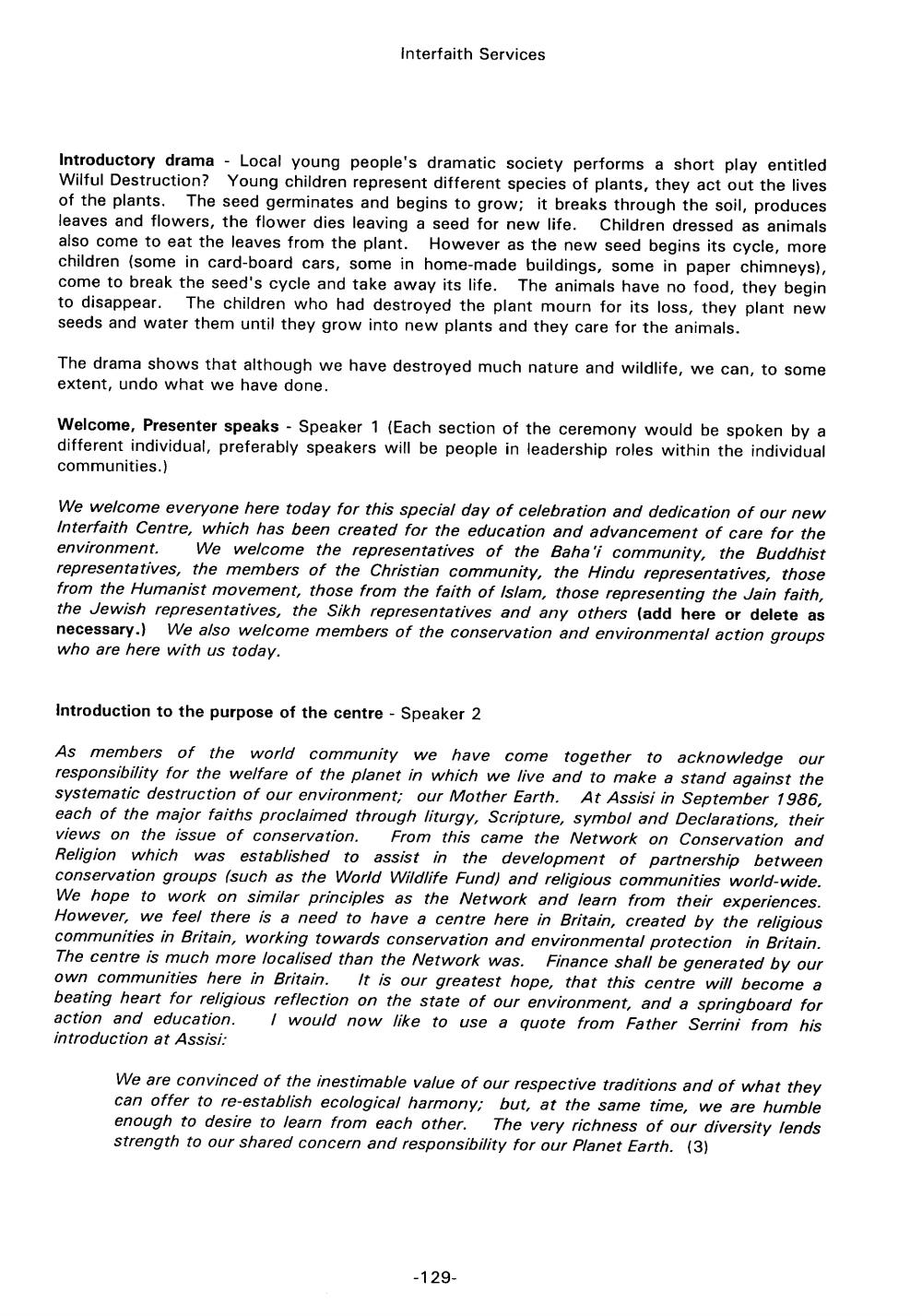________________
Interfaith Services
Introductory drama Local young people's dramatic society performs a short play entitled Wilful Destruction? Young children represent different species of plants, they act out the lives of the plants. The seed germinates and begins to grow; it breaks through the soil, produces leaves and flowers, the flower dies leaving a seed for new life. Children dressed as animals also come to eat the leaves from the plant. However as the new seed begins its cycle, more children (some in card-board cars, some in home-made buildings, some in paper chimneys), come to break the seed's cycle and take away its life. The animals have no food, they begin to disappear. The children who had destroyed the plant mourn for its loss, they plant new seeds and water them until they grow into new plants and they care for the animals.
The drama shows that although we have destroyed much nature and wildlife, we can, to some extent, undo what we have done.
Welcome, Presenter speaks Speaker 1 (Each section of the ceremony would be spoken by a different individual, preferably speakers will be people in leadership roles within the individual communities.)
We welcome everyone here today for this special day of celebration and dedication of our new Interfaith Centre, which has been created for the education and advancement of care for the environment. We welcome the representatives of the Baha'i community, the Buddhist representatives, the members of the Christian community, the Hindu representatives, those from the Humanist movement, those from the faith of Islam, those representing the Jain faith, the Jewish representatives, the Sikh representatives and any others (add here or delete as necessary.) We also welcome members of the conservation and environmental action groups who are here with us today.
Introduction to the purpose of the centre - Speaker 2
As members of the world community we have come together to acknowledge our responsibility for the welfare of the planet in which we live and to make a stand against the systematic destruction of our environment; our Mother Earth. At Assisi in September 1986, each of the major faiths proclaimed through liturgy, Scripture, symbol and Declarations, their views on the issue of conservation. From this came the Network on Conservation and Religion which was established to assist in the development of partnership between conservation groups (such as the World Wildlife Fund) and religious communities world-wide. We hope to work on similar principles as the Network and learn from their experiences. However, we feel there is a need to have a centre here in Britain, created by the religious communities in Britain, working towards conservation and environmental protection in Britain. The centre is much more localised than the Network was. Finance shall be generated by our own communities here in Britain. It is our greatest hope, that this centre will become a beating heart for religious reflection on the state of our environment, and a springboard for action and education. I would now like to use a quote from Father Serrini from his introduction at Assisi:
We are convinced of the inestimable value of our respective traditions and of what they can offer to re-establish ecological harmony; but, at the same time, we are humble enough to desire to learn from each other. The very richness of our diversity lends strength to our shared concern and responsibility for our Planet Earth. (3)
-129




